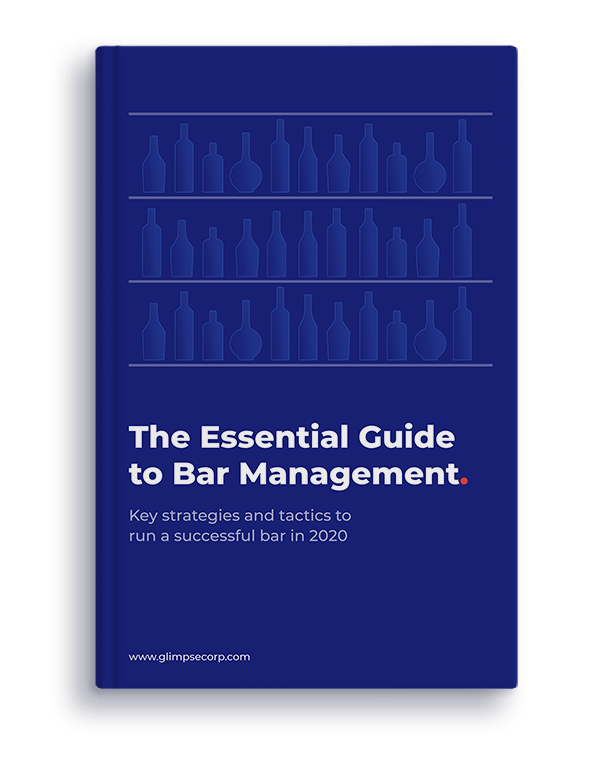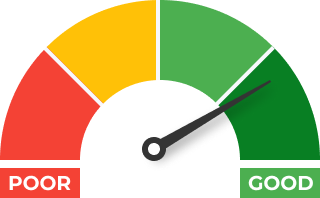A good working environment helps your business grow and keeps your employees’ morale high as well. High-performing employees are generally happier and more likely to stay and see your business’s core objectives through. When you encourage performance in your employees, you build their confidence and reduce your staff turnover.
In this article, we’re going to explore how you can turn your bar or restaurant into the perfect workplace for your employees. We’re also going to look at how you can turn your employees into high performers and help them reach their productivity potential.
Let’s dive right in!
Analyze your operations
The first step to creating the perfect workplace and maximizing employee performance is to take a close look at your operations. Identify areas of inefficiency and low performance and review why those areas aren’t running smoothly. You can do this by observing your team and using data from your POS or inventory system. You can also utilize tools like Glimpse to analyze your footage and identify areas of inefficiency or waste.
You can then find out exactly which employees are responsible and develop a performance improvement plan. For example, let’s say you find that a specific employee wastes a lot more product compared to other team members. Knowing this, you can talk to them and explain how this impacts profitability. You can then address the issue with a separate training session after work over a week or two and review their performance a few weeks later.
If your approach is professional, showing the employee where they’re ineffective or wasteful and retraining them, you will build trust with them faster. It motivates them to learn from their mistakes and strive to perform better.
Provide strong incentives
You’ve identified areas vulnerable to negligence or inefficiencies. It’s now time to create structures that encourage employees to pay attention to those areas and follow your procedures.
Fixing employee mistakes doesn’t have to be all about disciplinary actions, except in gross misconduct cases. If you want to transform your employees’ performance without alienating them, positive encouragement works best.
Focus on rewarding good behavior instead of punishing bad behavior. Show your employees what they can gain if they perform well instead of threatening them with poor performance consequences.
You can show positive encouragement through employee awards, cash bonuses, and promotion within the team. Tie in these rewards with the performance you want to see. For example, if you’re going to improve customer service, use metrics like your online reviews and ratings to recognize your team for their efforts.
Something worth noting is that the positive encouragement process needs complete transparency. You don’t want your employees to suspect any favoritism when granting these rewards.
Find the right talent
Once you have the right incentives in place, you need to hire people with the right skills and attitude. Just like you can’t fit a square peg in a round hole, you can’t force an employee into a role they’re not qualified for. The majority of employees will feel dissatisfied when given responsibilities well beyond their comfort zone or ones they don’t fully embrace.
It’s in your best interest to hire qualified people for the task at hand, not to mention that it will greatly benefit your team and ease their workload. When making new hires, establish the skills and attitudes that you’re looking for. Monitor their past experience for clear indicators of these qualities and organize your hiring around them. You’ll also need to clarify to the employee that you’ll hold them to these same standards once they get the job.
Create a great onboarding program
Employee induction is one of the most important parts of maximizing performance. Many business owners think that hiring is done when the contract is signed.
But onboarding a new employee is a perfect opportunity to train them for their role and get them familiar with your bar or restaurant culture. Have a program in place to coach your new hire on the dos and don’ts of their new workplace. Introduce every relevant team member to your SOPs. Have a fixed start and end date, allow for questions, and show that people are valued in your establishment.
It works best to have new hires trained by one of the senior employees through observation and dedicated practice sessions. You can also consider outsourced training if your team is already overworked or not willing to train new team members.
Introduce continuous development sessions
Learning is a never-ending journey. That’s why you need programs that ensure your team keeps learning and improving their skills on an ongoing basis. Your team needs to stay engaged and have a mindset that allows them to grow professionally.
These new skills will give your team the confidence they need to carry out their duties fully. And their improved performance will translate into happy customers and a thriving bar and restaurant.
As with onboarding, you can continue to organize regular training and workshops – whether it’s done internally or with a professional training company.
Versatile team members are more valuable to your business since they could hold down the fort when another employee is away, even if they had to perform vastly different duties.
Focus on employee retention
Staff turnover is usually one of the most significant issues in the bar and restaurant industry. Having a high staff turnover can be detrimental to your business because it’s costly, time-consuming, and kills the morale of your staff. Whenever a team member leaves your business, you need to start from scratch with onboarding and training a replacement.
Most of the time, a high staff turnover is usually a symptom of a deeper problem within your business. Some of the reasons for a high staff turnover include:
Bad managers
There’s a saying that goes, “People don’t leave bad jobs. They leave bad bosses.” A lousy manager might push your most valuable team members right into the arms of competitors. To prevent this, you need to ensure you have a competent and effective manager that cares about the team members as much as they care about your business.
Boredom
Your employees will probably get bored if they feel their skills are underutilized in their current positions. Boredom, however, won’t be a problem for your team if you follow our tips for hiring the right talent and focus on helping them develop their skill set.
Getting overworked
An overworked employee is a stressed employee. And once they associate their rising stress levels to your business, they’ll be out of the door in no time. A stressed employee is terrible for your bar or restaurant’s bottom line because they won’t be efficient and won’t offer the best customer service.
Giving sufficient days off and making sure your team’s size matches the work volume would help prevent burnout in your employees.
Toxic culture
Do you have an employee-friendly culture in your bar and restaurant business? Do you encourage senior staff to welcome new hires, or do they operate in cliques? If your culture doesn’t fit your employees, they’ll eventually move to a place where they feel more welcome.
Make sure to conduct regular culture audits by talking to employees on all levels to determine if something is amiss. You should also encourage team members to be friendly to one another and welcoming to new hires.
Micromanagement
Micromanaging an employee shows that you don’t trust them to do a task independently. It demotivates them and makes them feel undervalued. This might result in a high employee turnover. Show your employees that you trust them by letting them make decisions and find innovative ways to carry out their tasks.
Thoughtful service monitoring
So far we covered many tips and strategies to improve employee performance. But how do you make sure your team does well in the long run?
Thoughtful service monitoring might be the key. This is a combination of video auditing, 1-on-1 reviews, and check-ins that don’t breach employee rights or demotivate them.
This type of service monitoring increases the likelihood to abide by the rules, work diligently and honestly. However, employee monitoring must be executed with caution and with respect for their privacy and personal space.
Below are some of our best tips to monitor employee service without stepping on anybody’s toes:
Disclose all monitoring activities to employees
Whether you are setting up cameras in the workplace or arrange an external audit, let your employees know. Keep everyone in the loop on exactly what will be monitored – when, how, where, and most importantly – why.
Back up any monitoring with legitimate business interests
Have a clear purpose behind why you plan to monitor company activity. This is not only for the sake of employee curiosity, but your own use of resources and budget.
If your aim is to keep the business running smoothly and to reach financial or output goals, involve your team. They’ll understand that you want the company to grow; likely, they’ll be on board to help you do so.
Ensure that monitoring is applied to all employees equally
When monitoring is set up, it should be to boost overall company performance and transparency. This means you should apply the same rules when it comes to monitoring to everyone in order to avoid internal issues and sabotage the whole program.
Conclusion
Highly performing employees are integral to your business’ success. Your ideal team members should be motivated and appropriately trained. With sound reward systems in place, open communication, and recognition, your employees will receive the incentives they need to do their best.
It’s also critical to realize that your employees have a life outside your business. Be friendly with your employees, but keep professional boundaries in place. A pleasant, healthy work culture will always attract quality people and help grow your business sustainably.









 +1 (786) 292-2373
+1 (786) 292-2373 insights@glimpsecorp.com
insights@glimpsecorp.com





